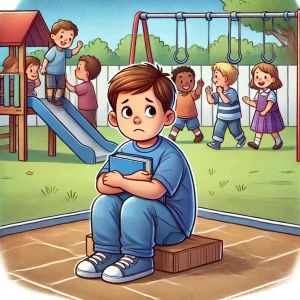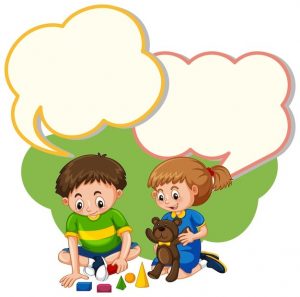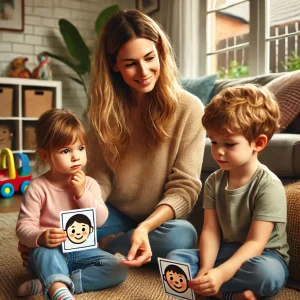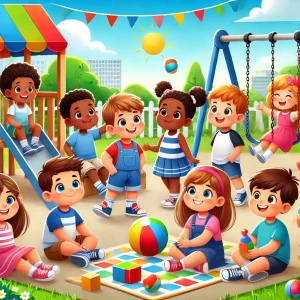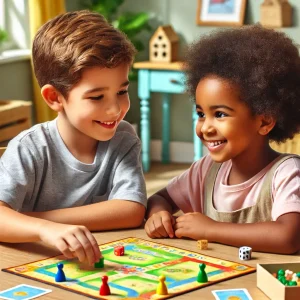How Effective Are Social Stories for Children with Autism?
Last Updated: January 18, 2025
Autism spectrum disorder presents unique communication challenges for children, impacting their ability to express and connect. Social Stories, tailored narratives that clarify social norms and expectations, have proven effective in aiding these children. At Wellness Hub, we harness the power of Social Stories within our innovative autism therapies to enhance understanding and interaction. This approach helps make everyday social situations more predictable and manageable for children with autism, empowering them to navigate their world with greater ease and confidence.
Struggling to Help Your Child Navigate Daily Challenges? Discover the Power of Social Stories Today –
Explore Social Stories for Autism and ADHD
What Are Social Stories?
Social Stories are a therapeutic tool designed specifically for individuals with autism spectrum disorder (ASD). They provide a simple and clear explanation of social interactions, behaviors, and skills through a carefully crafted narrative. The concept of Social Stories was developed by Carol Gray in 1991 as a way to support children and adults with autism to better understand the nuances of interpersonal communication and to navigate everyday social situations more effectively.
1. The Science Behind Social Stories
Social Stories are more than just simple tales; they are based on psychological principles that address the unique learning preferences of individuals with autism. Understanding why these stories are so effective requires a dive into the cognitive and emotional workings of autistic children.
2. Cognitive Processing in Autism:
Individuals with autism often exhibit a preference for consistent, structured information. Social Stories cater to this need by presenting social scenarios in a predictable and systematic format. This consistency helps to demystify social interactions, making them more accessible and less intimidating.
3. Behavioral Cues and Emotional Regulation:
Social Stories are crafted to explicitly outline both the external actions and internal cues associated with social interactions. For example, they may explain not only the steps involved in expressing gratitude but also the facial expressions and tones that typically accompany a ‘thank you.’ This detailed guidance helps children with autism recognize and interpret behavioral cues, which are often a source of confusion in real-world interactions.
4. Effectiveness Supported by Research:
Studies have shown that Social Stories can significantly improve behavior in children with autism by increasing their engagement and reducing incidents of disruptive behavior. Research highlights that when children understand what is expected of them and why certain behaviors are appropriate, they feel more secure and are more likely to engage positively with their environment.
Make Transitions and Routines Easier for Your Child with Custom Social Stories – Find Social Stories That Work for Your Family
Benefits of Social Stories in Autism Therapy
Social Stories are a transformative tool in autism therapy, offering several key benefits that enhance the daily lives and development of children with autism:
- Improving Communication Skills:
- Breaks down verbal and non-verbal communication into simple, actionable steps.
- Teaches children how to initiate conversations, take turns speaking, and use proper gestures.
- Allows repetitive practice to internalize essential communication skills in a supportive setting.
- Enhancing Social Understanding:
- Clarifies the unwritten rules of social interactions, such as sharing and personal boundaries.
- Illustrates cause and effect in social situations, helping children understand why certain behaviors are expected.
- Gradually builds the ability to interpret and respond to social cues correctly.
- Reducing Anxiety in Social Situations:
- Provides predictable narratives that outline social expectations, reducing uncertainty.
- Lowers stress by preparing children for a variety of social interactions.
- Enhances participation in social activities, improving self-esteem and reducing isolation.
How to Implement Social Stories Effectively
Implementing Social Stories effectively can make a significant difference in a child’s ability to manage and understand social interactions. Here’s a step-by-step guide for parents and educators on creating and using Social Stories as a powerful autism communication tool:
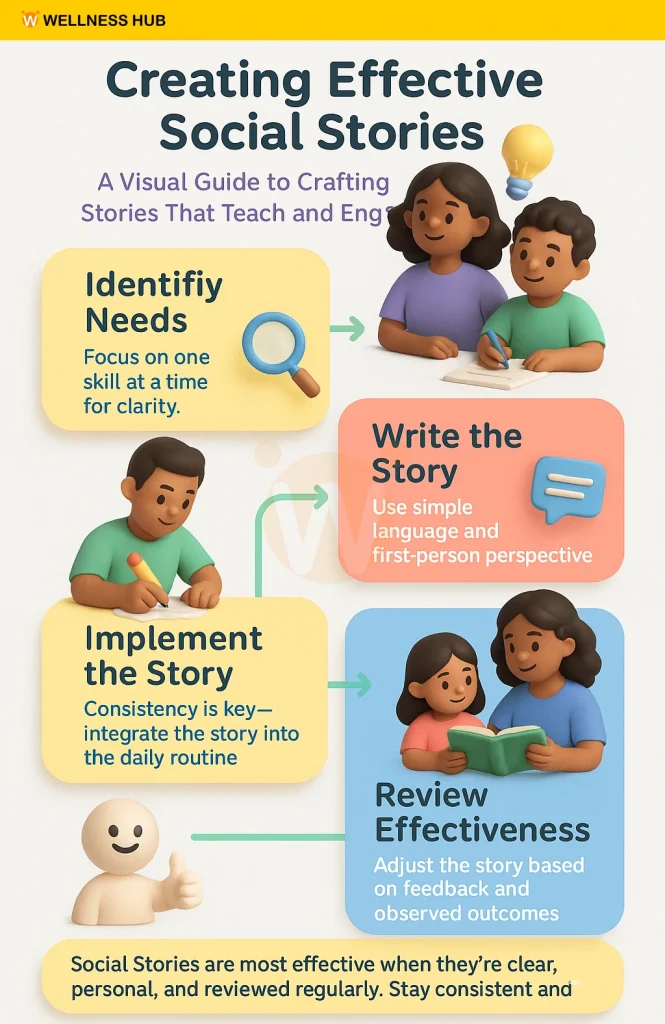
1. Identify the Purpose:
Start by identifying the specific social skill or situation that your child needs help with. This could range from greeting others to participating in group activities.
2. Write a Personalized Story:
Tailor the story to your child’s interests and comprehension level. Use simple, clear language and write from the child’s perspective. Include relevant social cues and appropriate responses.
3. Incorporate Visuals:
Children with autism often process visual information better than verbal information. Include pictures or illustrations that depict the story’s scenarios to help the child visualize and understand the context better.
4. Review the Story with Your Child:
Read the story with your child multiple times. Make this a routine to help them memorize and internalize the behaviors and responses described.
5. Role-Play Scenarios:
After going through the story, engage in role-playing exercises to practice the behaviors. This helps solidify the learning and makes it more applicable to real-life situations.
6. Gather Feedback and Adjust:
Observe your child in real social situations to see if the Social Story is effective. Ask for feedback from other caregivers or educators who interact with your child. Adjust the story as needed based on the feedback and your observations.
7. Reinforce and Expand:
Continuously reinforce the behaviors learned through frequent review of the story. As your child masters one skill, introduce new stories to cover additional scenarios or more complex social interactions.
Below is a table summarizing the steps for implementing Social Stories effectively:
| Step | Action | Tips |
|---|---|---|
| Identify Purpose | Determine the focus of the Social Story. | Focus on one specific behavior or social skill at a time. |
| Write Story | Create a personalized story. | Use simple language; include the child’s perspective. |
| Incorporate Visuals | Add relevant pictures or illustrations. | Visuals should clearly represent key points of the story. |
| Review with Child | Regularly read the story with your child. | Make it a routine; engage the child’s attention. |
| Role-Play | Practice the behaviors through role-playing. | Role-play in a safe, controlled environment. |
| Gather Feedback | Observe and collect feedback on the story’s impact. | Be open to making adjustments to improve effectiveness. |
| Reinforce and Expand | Reinforce learned behaviors and introduce new stories. | Expand the range of stories as the child masters various skills. |
Challenges and Considerations
While Social Stories are a valuable tool in autism therapy, they are not without their challenges. Understanding these potential obstacles and knowing how to navigate them can significantly enhance the effectiveness of Social Stories for children with autism. Here’s a look at some common challenges and practical solutions to consider:
Individual Variability
- Problem: Children with autism have diverse needs and abilities; a one-size-fits-all approach does not work.
- Solution: Customize Social Stories to match the child’s developmental level and personal interests. Continuous assessment and adaptation of the stories can help ensure they remain relevant and engaging for the child.
Consistency in Application
- Problem: Inconsistent use of Social Stories across different environments (home, school, therapy) can reduce their effectiveness.
- Solution: Collaborate with all of the child’s caregivers—parents, teachers, therapists—to ensure Social Stories are used consistently. Share the stories and strategies across environments to maintain a uniform approach to learning.
Support Your Child’s Emotional Growth with Tools That Truly Make a Difference – Start Using Social Stories for Autism and ADHD
Measuring Effectiveness
- Problem: It can be difficult to gauge how well a Social Story is working, especially in the short term.
- Solution: Set clear, observable goals for each Social Story, such as reducing specific undesired behaviors or increasing appropriate social interactions. Use these metrics to evaluate effectiveness and make necessary adjustments.
Over-Reliance on Stories
- Problem: Relying solely on Social Stories without integrating other therapeutic techniques might limit overall development.
- Solution: Use Social Stories as part of a broader autism education program. Incorporate other therapies and interactive activities that can reinforce the lessons learned from the stories.
Keeping Engagement High
- Problem: Children may lose interest in the stories over time, which can diminish their impact.
- Solution: Keep the stories dynamic and interactive. Use multimedia elements like videos or interactive apps, and update the content regularly to keep it fresh and engaging.
Conclusion
Social Stories are a powerful tool for children with autism, helping them understand and navigate social interactions more confidently. At Wellness Hub, we specialize in innovative therapies that support and empower these wonderful children. Explore our website to find resources, tips, and expert advice tailored to your needs. We’re here to help every step of the way, making social skills learning accessible and engaging. Visit us at Wellness Hub to learn more and see how we can assist in your child’s social success. Join us in making a positive change in their world!
Frequently Asked Questions:
1. What are Social Stories?
Social Stories are short, customized narratives used to teach children with autism appropriate social behaviors and responses by illustrating specific situations in a clear and understandable way.
2. How do Social Stories help children with autism?
Social Stories help by breaking down complex social cues into simple, manageable parts, making it easier for children to understand expectations and react appropriately in social situations.
3. Can Social Stories improve my child’s communication skills?
Yes, Social Stories can significantly enhance communication by providing examples of how to converse and interact, which children can practice and apply in everyday life.
4. When should I start using Social Stories with my child?
You can start using Social Stories at any age, but they are most effective when introduced as soon as you notice your child struggling with social interactions.
5. How often should a child be exposed to Social Stories for them to be effective?
Regular exposure is key. Reading Social Stories daily or several times a week can help reinforce the behaviors and concepts being taught.
6. Where can I find examples of Social Stories?
Many examples are available online, or you can create your own. Wellness Hub also offers resources and guides on creating personalized Social Stories tailored to your child’s needs.
7. Can Social Stories be used in schools?
Absolutely! Social Stories are beneficial in school settings where they can help children understand classroom expectations and interact socially with their peers.
8. What should I do if a Social Story doesn’t seem to be working?
If a Social Story isn’t effective, it may need to be adjusted to better suit your child’s comprehension level or interests. It’s also helpful to consult with a therapist for guidance on improving its effectiveness.
9. Are there digital tools for creating Social Stories?
Yes, there are several apps and websites that offer templates and tools for creating digital Social Stories, making it easier for parents and educators to customize stories specific to their needs.
10. How can I measure the success of using Social Stories?
Success can be measured by observing improvements in your child’s ability to handle situations described in the stories, reduced anxiety in social settings, and feedback from educators and therapists.
About the Author:
Shravanaveena Gajula
M.Sc ., Speech and Language Pathology (5+ years of experience)
Shravanaveena Gajula is a dedicated Audiologist and Speech-Language Pathologist with a BASLP and an M.Sc in Speech and Language Pathology. With experience spanning multiple settings, including Wellness Hub and Ashray Akruti, Veena specializes in a wide range of disorders from developmental issues in children to speech and language assessments in adults. Her expertise includes parent counseling, managing speech sound and fluency disorders, and creating individualized therapy programs. Veena is also PROMPT certified and an author of several insightful blogs on speech and language pathology, aiming to educate and assist caregivers in supporting their loved ones.
Book your Free Consultation Today
Parent/Caregiver Info:
Client’s Details:
* Error Message
